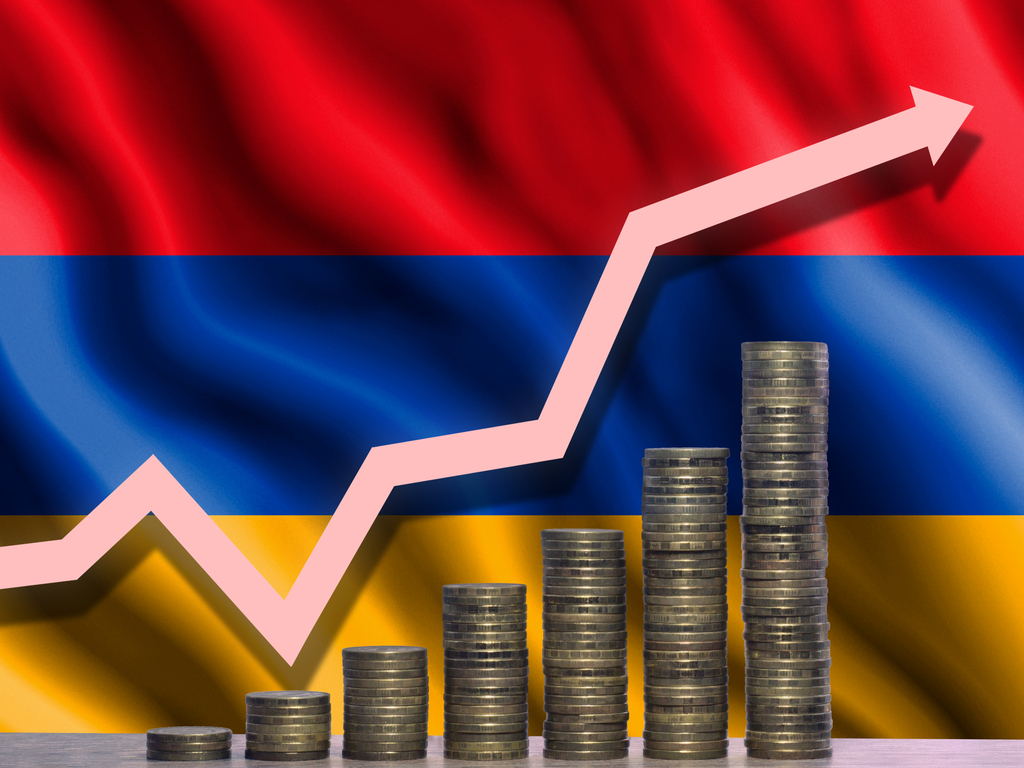Economy of Armenia
Armenia is considered a developing country. A nation’s stage of development is determined by a number of factors, including economic prosperity, life expectancy, income equality, and quality of life. As a developing country, Armenia may not be able to provide consistent social services to its citizens. These social services can include things like public education, reliable health care, and law enforcement. Developing country citizens may have a lower life expectancy than developed country citizens. Armenia exports around $ 1.65 billion and imports around $ 3.46 billion each year. 18.2% of the country’s population are unemployed. The total number of unemployed in Armenia is 534,016. In Armenia, 32% of the population live below the poverty line. The proportion of citizens living below the poverty line in Armenia is relatively high but does not give rise to complete concern about investment. Potential financiers should look at other economic indicators, including GDP, rate of urbanization, and currency strength, before making any investment decisions. Government spending on education is 3% of GDP. The country’s Gini index is 30.9. Armenia experiences good equality. The majority of Armenia’s citizens are in a narrow income range, although some cases can vary widely. Armenia has a Human Development Index (HDI) of 0.73. Armenia has an upper middle HDI value. This suggests that the majority of citizens will be able to live desirable lives, although some citizens will not be able to achieve a high standard of living. The Global Peace Index (GPI) for Armenia is 2,028. The strength of the Legal Rights Index for Armenia is 5. Overall, it is viewed as rather inadequate – bankruptcy and security laws can protect the rights of borrowers and lenders to a certain extent; Credit information can be sufficient, but hardly available, or, conversely, it can be available but not sufficient.
Credit rating
The credit depth index for Armenia is 8, which means that the information is for the most part sufficient and fairly detailed; Accessibility is not a problem. According to the rating agency Fitch, Armenia has a credit rating of BB- and the outlook for this rating is stable. According to the rating agency Moody’s, Armenia has a credit rating of Ba2 and the outlook for this rating is negative.
Central bank
The prime rate of commercial banks in Armenia is 15.9. In Armenia, the institution that manages the currency, money supply and interest rates of the state is called the Central Bank of the Republic of Armenia. The local central bank of Armenia is called Hayastani Kentronakan Bank. The average deposit rate of local banks in Armenia is 10.4%.
Central bank
Armenia has a national debt of 13.22% of the country’s gross domestic product (GDP) as estimated in 2010.
Tax information
Corporate income tax in Armenia is 20%. Personal income tax ranges from 24.4% to 36%, depending on your specific situation and income. The VAT in Armenia is 20%.
Finances
The total gross domestic product (GDP) in Armenia, valued as purchasing power parity (PPP), is $ 20.831 billion. The gross domestic product (GDP) in Armenia, valued as purchasing power parity (PPP) per capita, was last measured at 0 million US dollars. PPP in Armenia is considered below average compared to other countries. A below-average PPP indicates that citizens in this country are finding it difficult to buy local goods. Local goods can include food, shelter, clothing, health care, personal hygiene, essential home furnishings, transportation and communications, laundry, and various types of insurance. Countries with below average PPPs are dangerous places to invest. The total gross domestic product (GDP) in Armenia is 10 billion. Based on these statistics, Armenia is considered a small economy. Countries with small economies generally support fewer industries and investment opportunities. However, worthwhile investment opportunities can be found. The gross domestic product (GDP) per capita in Armenia was last measured at 0 million US dollars. The average citizen of Armenia has very little wealth. Countries with very low per capita wealth often have a lower life expectancy and a dramatically lower quality of life for their citizens. In countries with very low wealth, it can be very difficult to find a highly skilled workforce as it is difficult for citizens to get the education needed to specialize in industries. However, compared to countries with higher wealth per capita, workers can be found at very low prices. The annual GDP growth rate in Armenia averaged 3.2% in 2014. Accordingly, Armenia is currently experiencing modest growth. Modest growth countries offer safe investment opportunities; their expanding economy suggests that businesses, jobs and incomes will grow accordingly.